Apple MacBook Pro 16-Inch Vs. Samsung Galaxy Book3 Ultra: Head-To-Head
Samsung is looking to challenge Apple’s latest 16-inch MacBook Pro with the new and powerful Galaxy Book3 Ultra. CRN gives a breakdown of how the two premium laptop workhorses compare, from the CPU, GPU and memory, to the storage, display, expansion ports and other key specs.
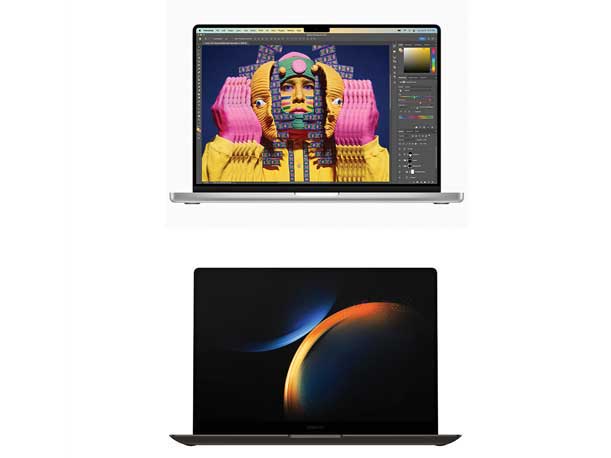
A New Contender For Apple’s Fastest MacBook Pro
A month after Apple announced the new 14- and 16-inch MacBook Pros with its homegrown M2 Pro and M2 Max chips in January, Samsung Electronics emerged with new competition for the Mac giant’s premium notebook brand in the form of the Galaxy Book3 Ultra.
Samsung’s new premium laptop is the most powerful offering in the company’s latest Galaxy Book3 series, making it the top adversary to Apple’s flagship 2023 laptop, the 16-inch MacBook Pro.
[Related: Samsung Galaxy S23 Series Vs. Galaxy S22 Series: Head-To-Head]
The South Korean electronics giant announced the latest Galaxy Book laptops alongside its flagship Galaxy S23 smartphone series at the company’s Galaxy Unpacked 2023 event in early February.
The decision to reveal the laptops at its premiere smartphone event, along with Samsung’s increased emphasis on connecting its PCs and phones with software, is why analyst Bob O’Donnell believes the company “could end up becoming a serious PC competitor in the premium market.”
“These are premium devices with sleek, premium designs and high-end components. For buyers seeking these kinds of machines, the Galaxy Book3 line presents an intriguing new option. More importantly, it seems to represent the start of a more serious effort to break into the PC market, and that’s something that is going to be interesting to watch,” wrote O’Donnell, chief analyst at TECHnalysis Research.
What follows is a breakdown of how Samsung’s Galaxy Book3 Ultra compares to Apple’s MacBook Pro 16-inch model, including the CPU and GPU, memory and storage, display, expansion ports and external display support, battery and power, and price. Both devices are available now.
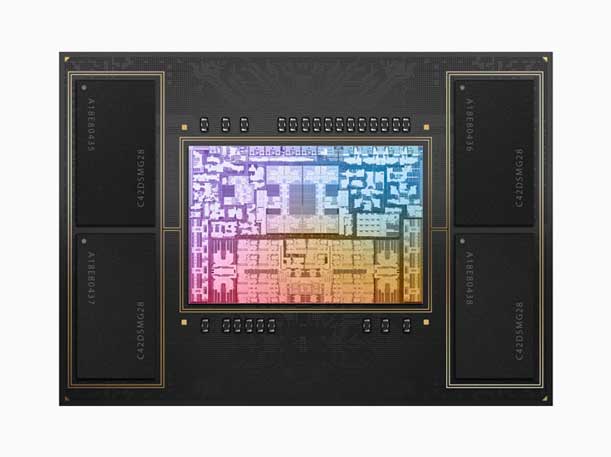
The CPU And GPU
Like other Mac computers from the past few years, Apple’s 16-inch MacBook Pro comes with an Arm-based system-on-chip (SoC) that was designed in house. This SoC consists of a CPU, a GPU, a Neural Engine, unified memory, cache and a fabric that allows those components to communicate.
The 16-inch MacBook Pro released in 2023 comes with one of two souped-up versions of Apple’s second-generation M2 SoC: the M2 Pro or M2 Max. The performance cores of the M2 Pro and M2 Max reportedly have a clock frequency of up to 3.7GHz.
The M2 Pro comes with a 12-core CPU, which is split between eight performance cores and four efficiency cores. It also has a 19-core GPU, a 16-core Neural Engine and a 200GB/s memory bandwidth.
The M2 Max comes with the same CPU and Neural Engine, but it has a beefier GPU, with options for 30-core and 38-core configurations, as well as double the memory bandwidth at 400GB/s.
Samsung’s Galaxy Book3 Ultra, on the other hand, comes with either an Intel Core i7-13700H or the higher-end Intel Core i9-13900H for the CPU and one of two choices for a discrete GPU: Nvidia’s GeForce RTX 4050 or GeForce RTX 4070.
The Intel Core i7-13700H comes with 14 cores: six performance cores and eight efficient cores. Its performance cores have a base frequency of 2.4GHz and a maximum turbo boost frequency of 5GHz.
The Intel Core i9-13900H comes with the same core count and core ratio. Its performance cores have a base frequency of 2.6GHz and a maximum turbo boost frequency of 5.4GHz.
Both CPUs come with several technologies, including Intel Deep Learning Boost, Intel Threat Detection Technology and an Intel Gaussian and Neural Accelerator.
The Nvidia GeForce RTX 4050 comes with 2,560 CUDA cores, a boost clock range of 1,605-2,370MHz, 6GB of GDDR6 memory and a 96-bit wide memory interface.
The Nvidia GeForce RTX 4070 comes with 4,608 CUDA cores, a boost clock range of 1,230-2,175MHz, 8GB of GDDR6 memory and a 128-bit wide memory interface.
Both the GeForce RTX 4050 and 4070 use Nvidia’s latest Ada Lovelace architecture, and they come with third-generation ray tracing cores and fourth-generation tensor cores.

Memory And Storage
The M2 Pro and M2 Max of the 16-inch MacBook Pro both feature unified memory, which allows the CPU and GPU to access the memory quicker than traditional computer configurations.
The M2 Pro supports LPDDR5 memory configurations of 16GB or 32GB with a 200GB/s memory bandwidth while the M2 Max supports 32GB, 64GB or 92GB with 400GB/s. The 96GB configuration is only supported by the version of M2 Max that has a 38-core GPU.
For storage, the 16-inch MacBook Pro comes with SSD configurations of 512GB, 1TB, 2TB, 4TB and 8TB. The 512GB option is only available for models with the M2 Pro.
The Galaxy Book3 Ultra, on the other hand, has a smaller capacity for memory and storage, with options for 16GB or 32GB of LPDDR5 RAM and a 1TB SSD.
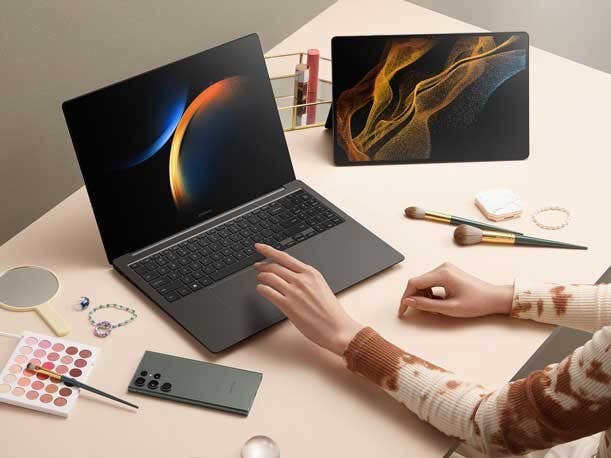
Display
The 16-inch MacBook Pro comes with a 14.2-inch Liquid Retina XDR display that supports 1 million colors with a wide DCI-P3 color space in a 3,024-by-1964 native resolution at 254 pixels per inch.
XDR stands for Extreme Dynamic Range, which gives the display a 1,000,000:1 contrast ratio as well as a sustained 1,000 nits of full-screen brightness and a peak 1,600 nits for high-dynamic-range content. For standard-dynamic-range content, the display supports 500 nits of brightness.
With Apple’s ProMotion technology, the MacBook Pro has an adaptive refresh rate of up to 120Hz. The fixed refresh rates are 47.95Hz, 48Hz, 50Hz, 59.94Hz and 60Hz.
Meanwhile, the Galaxy Book3 Ultra comes with a 16-inch Dynamic AMOLED 2X display and a 2,880-by-1,800 native resolution. The standard brightness runs at 400 nits while HDR brightness is 500 nits.
The Galaxy Book3 Ultra’s display has an adaptive refresh rate that goes from 48Hz to 120Hz. It also has 120 color volume in the DCI-P3 color gamut.
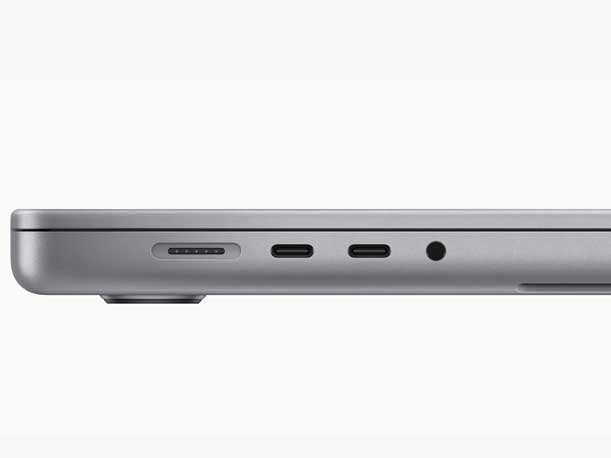
Expansion Ports And External Display Support
The 16-inch MacBook Pro comes with an SDXC card slot, an HDMI port for external displays, a 3.5mm headphone jack and a MagSafe 3 port for charging.
The laptop also has three Thunderbolt 4 ports—two on the left and one on the right—which supports charging and DisplayPort connectivity.
With the M2 Max, the 16-inch MacBook Pro can connect up to three Pro Display XDRs with a 6K resolution at a 60Hz refresh rate via Thunderbolt and a 4K TV at 144Hz via HDMI. The HDMI port can support an 8K TV at 60Hz or a 4K TV at 240Hz if there are only two external displays via Thunderbolt.
With the M2 Pro, the MacBook can connect up to two Pro Display XDRs with a 6K resolution at 60Hz. Alternatively, it can support one external display with up to a 6K resolution at 6Hz via Thunderbolt and a 4K TV at 144Hz over HDMI. It can also support one external display with an 8K resolution at 60Hz or a 4K resolution at 240Hz over HDMI only.
The Galaxy Book3 Ultra comes with a MicroSD slot, a 3.5mm headphone jack, an HDMI 2.0 port for external displays, two Thunderbolt 4 ports and one USB-A 3.2 port. Samsung has not disclosed the range of configurations it supports for multiple displays.
Samsung’s Second Screen feature lets you turn a Galaxy Tab tablet into a second screen for the Galaxy Book3 Ultra, no wired connection necessary. The Samsung Multi Control feature also lets users drag and drop items between a Galaxy tablet or smartphone and the Galaxy Book3 Ultra.
Wireless Connectivity
The 16-inch MacBook Pro comes with Wi-Fi 6E and Bluetooth 5.3 while the Galaxy Book3 Ultra comes with Wi-Fi 6E and Bluetooth 5.1.
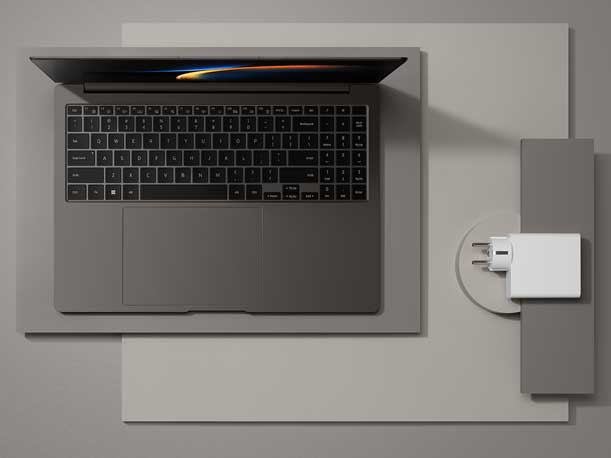
Camera, Microphone And Speakers
The 16-inch MacBook Pro comes with a 1080p FaceTime HD camera, enhanced with an advanced image signal processor for computational video, and a “studio-quality” three-mic array.
The laptop has a “high-fidelity” six-speaker sound system with force-cancelling woofers, which supports wide stereo sound and Spatial Audio when using Dolby Atmos. Spatial Audio with dynamic head tracking is enabled with Apple’s AirPods Pro, AirPods Pro and AirPods Max.
The Galaxy Book3 Ultra comes with an FHD 1080p camera and a “studio-quality” dual-mic array. It comes with an AKG four-speaker sound system, which supports Dolby Atmos.
Battery And Power
Apple claims that the 16-inch MacBook Pro’s battery can last up to 22 hours for movie playback using the Apple TV app and up to 15 hours of wireless web browsing.
The laptop comes with a 100-watt-hour lithium-polymer battery and a 140W USB-C power adapter, which supports fast charging.
Samsung claims that the Galaxy Book3 Ultra’s 76-watt-hour battery is long lasting — without providing any specific examples — and the 100W USB-C adapter supports fast charging.
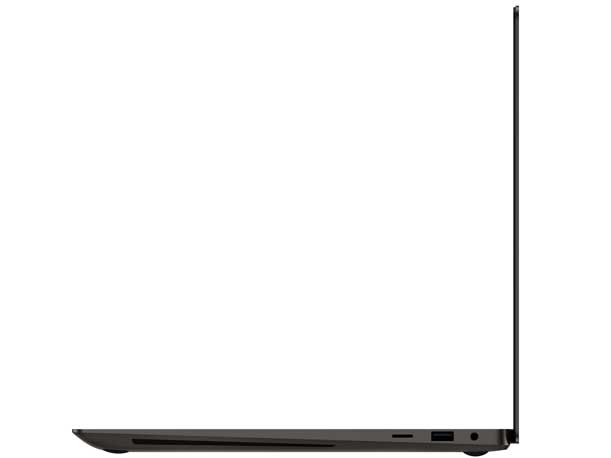
Size And Weight
The 16-inch MacBook Pro weighs 4.7 pounds with the M2 Pro and 4.8 pounds with the M2 Max, and its chassis measures 0.66 inch high, 14.01 inches wide and 9.77 inches deep.
The Galaxy Book3 Ultra weighs 3.95 pounds, and its chassis measures 0.65 inch high, 14 inches wide and 9.86 inches deep.
Price
The 16-inch MacBook Pro starts at $2,499 with an M2 Pro, 16GB of unified memory and a 512GB SSD. It can go up to $6,499 with an M2 Max, 96GB of unified memory and an 8TB SSD.
The Galaxy Book3 Ultra starts at $1,799 with an Intel Core i7, Nvidia GeForce RTX 4050, 16GB of RAM and a 1TB SSD. It goes up to $2,399 with a Core i9, GeForce RTX 4070, 32GB of RAM and a 1TB SSD.